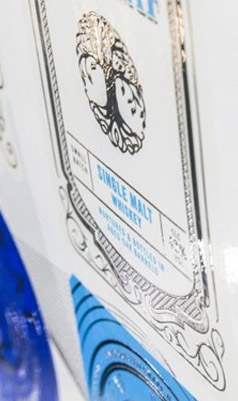

Flexible Packaging
ACTEGA is an international leader in flexible packaging by offering tailored inks, coatings and adhesives.
LEARN MORE

ACTEGA is an international leader in flexible packaging by offering tailored inks, coatings and adhesives.
LEARN MORE

Our focus on innovation is at the heart of our DNA, so we invest heavily in the development of new technologies.
DISCOVER MORE

Our goal is becoming climate-neutral by 2025. Discover more about our commitment to environmental protection.
DISCOVER MORE

Discover our calendar with great images and powerful finishing effects.
MoreYou have already subscribed to our newsletter.
You successfully unsubscribed from our newsletter
Continue ShoppingGloss is the ability of a surface to reflect light totally or partially. The more light is reflected, the more glossy the appearance of the surface. The contrast of gloss is matt. Also with regard to printed products, light is reflected depending on the type of surface. This means: The more even the surface, the stronger the reflection and the higher the gloss. If your surface is uneven, light is spreaded. The coating appears matt. Thus, the gloss of a coating is both dependent on the coating itself and the applied substrate. But also ink coverage and coating coverage play an important role. If you are facing – as sometimes possible – a draw back effect (the loss of gloss points), this may damage the quality of your printed products. Often, a draw back effect can be observed after 24 hours.

1. Coat wet on dry
A gloss decrease can happen due to the penetration of coatings into the wet ink. Also, components of the printing ink can link with the coating. This effect mainly occurs during the inline varnishing on high ink coverage. Please ensure that inks are sufficiently dry.
2. Check your coating application
Also, the amount of your coating application can influence the gloss level. Please pay attention to our recommendations in the corresponding Technical Data Sheet.
3. Use a primer if possible
For UV coatings we recommend a waterbased primer for sealing the substrate’s surface. If you are using conventional inks and a UV coating inline, you need a double coating unit. The waterbased primer seals the surface; thus, the UV coating cannot absorb into the oil based inks. Important: Ensure the sufficient drying of your waterbased primer.
4. Choose another substrate
Use glossy coated substrates with a homogeneous and closed surface if possible. Avoid substrates with a rough coat. This will ensure that light can reflect in a better way, the gloss is increasing.
Influence factor: Coating (1)
Measure: Coat wet on dry
Influence factor: Coating application
Measure: Increase application amount, if necessary
Influence factor: Coating (2)
Measure: Use a primer, if necessary
Influence factor: Substrate
Measure: Apply an alternative with a homogeneous surface
Still have open questions? Contact us and we will support you with the application.
CONTACTThe Troubleshooting Series is your source of content with smart tips that helps you to make the most of all ACTEGA products in your processes. In addition to state-of-the-art chemical specialties for the packaging industries, we are your knowledge partner by offering you our technical expertise and useful information.
DISCOVER ALL